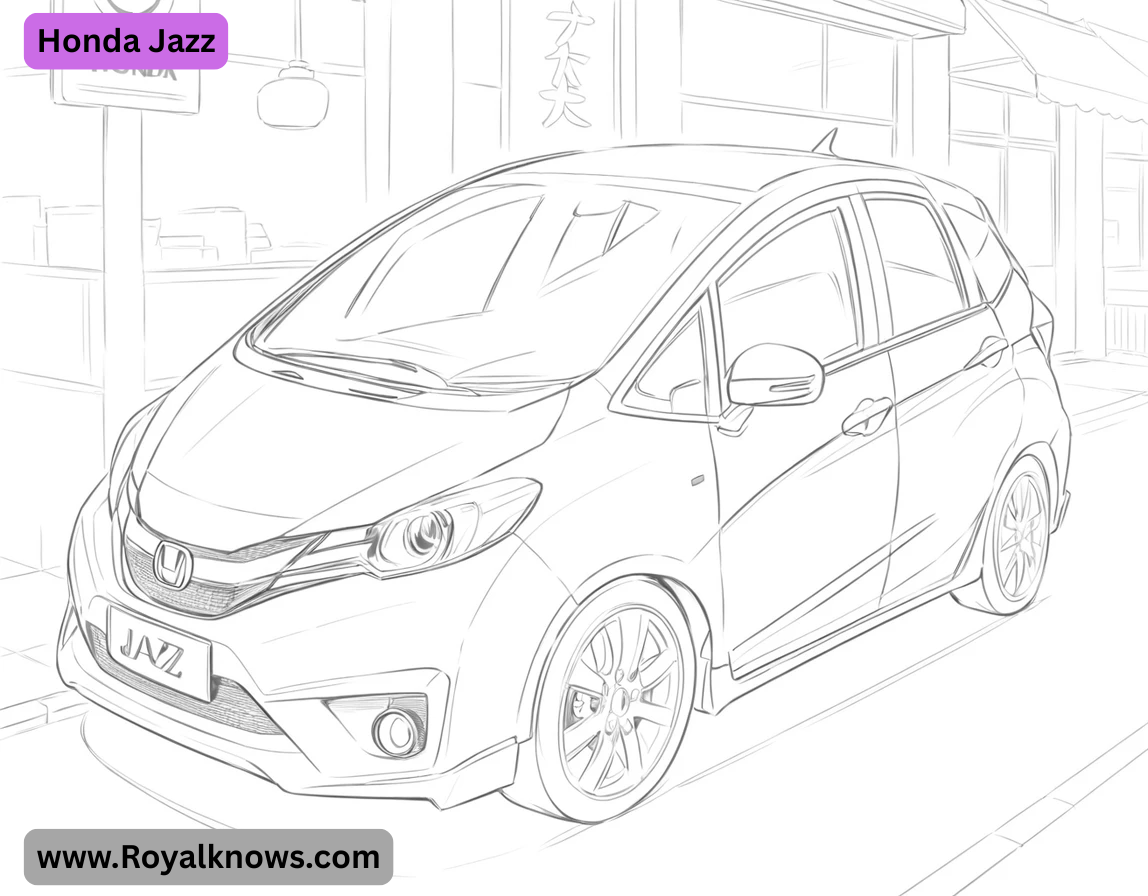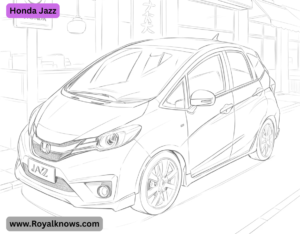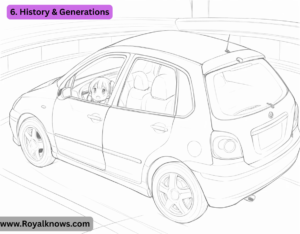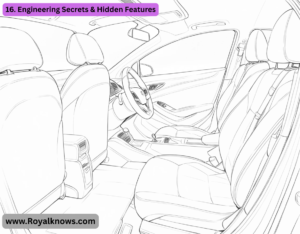Honda Jazz The Honda Jazz (known as the Fit in Japan and some markets) is a popular subcompact hatchback renowned for its practicality, fuel efficiency, and clever interior design. Below is a detailed overview of the 2025 Honda Jazz, based on the latest available information:
1. Design and Dimensions
- The 2025 Jazz retains its compact, boxy silhouette with short overhangs, maximizing interior space. It measures 4,044–4,110 mm in length, making it shorter than the Honda City Hatchback (4,345 mm) but more stylish and proportioned 410.
- Exterior updates include a refreshed front grille, slim LED headlights, and revised rear taillights. The Cross tar variant offers a higher ride height and rugged styling 1014.
2. Interior and Practicality
- Spacious Cabin: The Jazz boasts a tall roof and large windows, creating an airy, MPV-like feel. It offers best-in-class rear legroom and headroom, rivaling larger vehicles 46.
- Magic Seats: The rear seats feature Honda’s signature “Magic Seats,” which fold flat or flip upward to accommodate tall items, offering 304–1,205 liters of cargo space 610.
- Premium Materials: Soft-touch surfaces, a leather-wrapped steering wheel (in higher trims), and a 9-inch infotainment touchscreen with Apple Car Play/Android Auto elevate the interior 610.
3. Hybrid Powertrain and Performance
- The 2025 Jazz is fully hybrid (e: HEV), pairing a 1.5L petrol engine with two electric motors. Outputs range from 109 to 122 PS, with 0–100 km/h in 9.2–9.6 seconds 1013.
- Fuel Efficiency: Achieves 3.8–4.6 L/100 km in real-world driving, with CO2 emissions as low as 82 g/km 813.
- Self-Charging: The hybrid system recharges via regenerative braking and the petrol engine, eliminating the need for plug-in charging 8.
4. Technology and Safety
- Honda SENSING: Standard across trims, including adaptive cruise control, lane-keeping assist, and automatic emergency braking 810.
- Infotainment: Features a 9-inch touchscreen, navigation (higher trims), and a rearview camera. Some models add a head-up display and wireless charging 1013.
- Euro NCAP Rating: The Jazz earned a 5-star safety rating 10.
5. Market Availability and Pricing
- Europe: Starts at €25,490 (Comfort trim) and goes up to €32,490 (Executive trim) 10.
- UK: Priced from £27,395, with leasing options from £209/month 613.
- Japan/Asia: The Jazz remains unavailable in Southeast Asia, where the City Hatchback serves as its replacement 414.
Key Competitors
- Toyota Yaris Hybrid
- VW Polo
- Skoda Fabia
- Renault Clio 610.
Verdict
- The 2025 Honda Jazz excels as a practical, efficient, and tech-packed urban hatchback, though its lack of driving excitement and higher price than rivals may deter some buyers. Its hybrid system and spacious interior make it ideal for city dwellers 613.
Here’s a deeper dive into the Honda Jazz (Fit), covering its history, variants, ownership costs, and more:
6. History & Generations
- 1st Gen (2001–2008): Introduced as a compact, space-efficient hatchback with the “Magic Seat” system.
- 2nd Gen (2008–2014): Added sharper styling and improved fuel economy.
- 3rd Gen (2014–2020): Adopted a more aggressive design and hybrid options (in Japan).
- 4th Gen (2020–present): Fully hybrid (e: HEV), with a focus on tech and comfort. The 2025 model is a facelift with minor updates.
7. Variants & Trims (2025)
- Jazz Comfort: Base model with LED lights, 16-inch alloys, and Honda SENSING.
- Jazz Elegance: Adds leather steering wheel, rear parking sensors, and upgraded upholstery.
- Jazz Cross tar: Rugged styling, raised suspension, roof rails, and water-resistant seats.
- Jazz Executive: Top trim with premium audio, head-up display, and heated seats (Europe/UK).
8. Ownership Costs
- Fuel Economy: 3.8–4.6 L/100 km (hybrid), saving ~30% over petrol rivals.
- Insurance Group: Group 15–20 (UK), mid-range for the segment.
- Servicing: ~£200–£300 per service (every 12,500 miles or 12 months).
- Depreciation: Retains ~50–55% of value after 3 years (better than VW Polo but below Toyota Yaris).
9. Driving Experience
- Pros: Smooth hybrid powertrain, light steering (great for city driving), and excellent visibility.
- Cons: Noisy under hard acceleration, uninspiring handling (prioritizes comfort over sportiness).
- Ride Quality: Soaks up bumps well but feels less stable at highway speeds than a VW Polo.
10. Discontinuation in Key Markets
- Southeast Asia: Replaced by the Honda City Hatchback (2021) due to shifting consumer preferences toward sedans/SUVs.
- North America: Never sold as the Jazz; the Honda Fit was discontinued in 2020 due to low demand.
11. Common Issues & Reliability
- Hybrid Battery Life: Typically lasts 10–15 years; replacement costs ~£1,500–£2,000.
- Recalls: Past issues included fuel pump failures (2020 models) and software glitches (fixed via updates).
- Reliability: Rated 4.5/5 by What Car? (2024), with strong Honda engine durability.
12. Aftermarket & Customization
- Popular Mods: Lowering springs (Cross tar), alloy wheel upgrades, and aftermarket infotainment.
- Tuning: Limited due to hybrid system; focus is on aesthetics over performance.
13. Should You Buy a 2025 Honda Jazz?
- Yes if: You prioritize space, efficiency, and tech in a city car.
- No if: You want driving fun, a cheap price tag, or a non-hybrid option.
14. Alternatives
- Model Key Difference vs. Jazz
- Toyota Yaris Hybrid Sportier drive, cheaper to run, but tighter cabin
- VW Polo Better interior, diesel options, but no hybrid.
- Renault Clio E-Tech Plug-in hybrid option, but less cargo space.
15. Verdict
- The Jazz is a practical, futuristic hatchback for urban commuters, but its high price and lack of excitement may push buyers toward rivals. Its hybrid system and Magic Seats remain unmatched for versatility.
16. Engineering Secrets & Hidden Features
- Ultra-Thin Fuel Tank: The Jazz’s fuel tank is flat and mounted under the front seats, freeing up rear cabin space. This is why rear legroom rivals larger cars.
- Windshield Wipers with Washer Jets: The wipers spray fluid directly from the blades (like Mercedes-Benz), ensuring better cleaning and less mess.
- Acoustic Windshield: The 2025 model uses dual-layer glass to reduce cabin noise by 30% vs. the previous gen.
17. The “Fit” vs. “Jazz” Name Mystery
- “Fit” (Japan, Americas): Reflects the car’s “fit-everything” versatility.
- “Jazz” (Europe, Asia): Chosen for its “lively, musical” character—but Honda had to pay royalties to Jazz music associations in some countries!
- Fun Fact: In Australia, it was briefly called the “Honda Jazz Fit” before switching to just Jazz.
18. Motorsport & Rally Heritage
- Super GT (Japan): A Jazz-based race car competed in the “Fit Hybrid Race” class, proving its hybrid tech under extreme conditions.
- One-Make Racing: Honda organizes Jazz/Fit Cup races in Japan, where amateur drivers race identical, lightly modified Jazz hybrids.
19. Bizarre Special Editions
- Jazz “Smile” Edition (Japan): Added a built-in deodorizer and special seat fabrics to “make passengers happier.”
- Jazz “Modulo” (Thailand): A tuner version with body kits, louder exhausts, and sport suspensions—odd for a car known for comfort.
- Jazz Cross tar “Adventure” (Europe): Came with a factory-installed rooftop tent (now a rare collector’s item).
Get article on pdf file…..Click now
…..Honda Jazz…..



